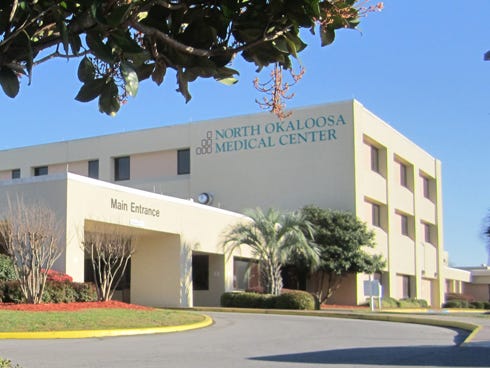
A year ago, a study about U.S. hospitals marking up prices by 1,000 percent generated headlines and outrage around the country.
Twenty of those priciest hospitals are in Florida, and researchers at the University of Miami wanted to find out whether the negative publicity put pressure on the community hospitals to lower their charges. Hospitals are allowed to change their prices at any time, but many are growing more sensitive about their reputations.
What the researchers found, however, was that naming and shaming did not work. The researchers looked at the 20 hospitals' total charges in the quarter of a year before the publicity and compared them to charges in the same quarter following the publicity. There was no evidence that the negative publicity resulted in any reduction in charges. Instead, the authors found that overall charges were significantly higher after the publicity than in previous quarters.
"We were thinking we would see a drop or lowering of some charges," said Karoline Mortensen, one of the authors of the study published in the Journal of Health Care Finance earlier this year. "There's nothing stopping them," she said, referring to the hospitals. "They're not being held accountable to anyone."
Researchers say the main factors leading to overcharging are the lack of market competition, lack of hospital transparency and the fact that the federal government does not regulate prices that health-care providers can charge. Only two states, Maryland and West Virginia, set hospital rates.
When the original study was published, shares of Community Health Systems, which owns many of the 50 hospitals listed with the highest markups, traded with almost triple the volume of the preceding weekday, suggesting shareholders had concerns about the system's pricing practices, the University of Miami researchers said. Share price fell by $1.39 that week, or more than 2.5 percent, but recovered by the end of that week.
Understanding hospital pricing and charges is one of the most frustrating experiences for consumers and health-care professionals. It is virtually impossible to find out ahead of time from the hospital how much a procedure or stay is going to cost. Once the bill arrives, many consumers have difficulty deciphering it.
After a Utah man posted a photo of his hospital bill on Reddit, showing a $39.35 charge for what he thought was for holding his newborn, his post triggered more than 11,000 comments.
Most hospital patients, covered by private or government insurance, don't pay full price because insurers and programs such as Medicare negotiate lower rates. But millions of Americans who don't have insurance don't have anyone to negotiate for them and are most likely to be charged full price. As a result, uninsured patients, who are often the most vulnerable, face skyrocketing medical bills that can lead to personal bankruptcy, damaged credit scores or avoidance of needed medical care.
Patients who are using out-of-network providers are also likely to be among those hardest hit. Given that Florida is such a popular tourist destination, it's possible that patients are more likely to be out-of-network so they may pay closer to the listed charges, Mortensen said.
Financial hardship for low-income patients has also become a significant issue in states such as Florida that have not expanded their Medicaid program, health experts have said. Florida also does not have legislation requiring for-profit hospitals to offer discounts to eligible uninsured patients.
North Okaloosa Medical Center, a 110-bed facility in Crestview, topped the list of hospitals with the highest charge-to-cost ratios in the original study. In the more recent study, researchers found the hospital's total charges continued to increase in the period after the publicity. Over a five year-period, from 2010 to 2015, the increase in charges was more than 52 percent, according to hospital data reported to Florida's Agency for Health Care Administration and analyzed by the researchers.
For Bayfront Health Dade City, which also raised its prices after the publicity, total charges for the 120-bed hospital soared more than 95 percent between 2010 and 2015, according to the data.
North Okaloosa, Bayfront Health Dade City and two other hospitals that posted the largest percent increases in that five-year period are part of Community Health Systems.
Rebecca Ayer, a Community Health Systems spokeswoman, said hospital charges aren't relevant measures of what patients, insurers or the government actually pay. Medicare and Medicaid determine the rates they will pay for services, she said, and those rates don't always cover the cost of providing care. Uninsured patients are offered "significant discounts" or charity care, and each hospital also offers financial counseling, she said.
Only one of the 20 Florida hospitals is a nonprofit. The rest are either part of the Hospital Corporation of America (HCA) health system, the largest in the state, or affiliated with Community Health Systems. Total charges for these hospitals are significantly higher than those for other hospitals in the state, the authors found.
Mortensen said patients might assume that hospitals that charge more for services are providing better care based on patient satisfaction measures than their lower-charging peers. But that was not the case, she said. The 20 hospitals were less likely than other hospitals in Florida to achieve three or more stars in the quality metrics system used by the Centers for Medicare & Medicaid Services.
The Washington Post News Service & Syndicate | 1301 K Street, NW. – Washington, DC 20071
This article originally appeared on Crestview News Bulletin: Crestview hospital’s charges continue to increase
